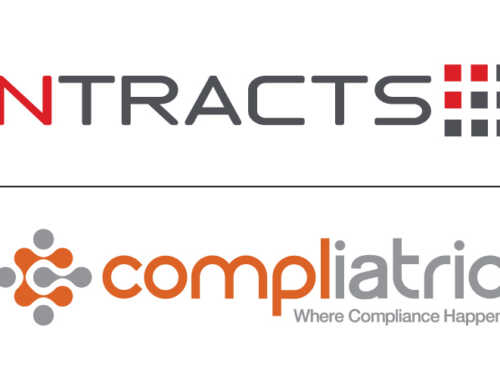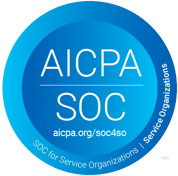Contract lifecycle management (CLM) is vital for healthcare organizations; driving efficiency, reducing risks, and maximizing the value of your contracts and contracting process. However, it’s crucial to recognize that CLM is not a one-size-fits-all process in the healthcare industry. Each healthcare organization’s journey through CLM is unique, and while there are established best practices, the implementation of a CLM solution must be tailored to fit the needs of the organization.
Below, we’ve identified the 5 stages that most healthcare organizations go through as they’re building a robust CLM process. These stages serve as a roadmap to guide organizations in optimizing their contract management processes, policies and procedures. Read on to learn what stage your organization falls into and the CLM-related action items and strategic objectives we recommend for each stage.
Overview of the Five Stages of Healthcare Contract Lifecycle Management:
- Initial or Ad Hoc Stage: Healthcare organizations in this stage often manage contracts on Excel spreadsheets, scattered across various departments. The primary goal is to centralize and gain visibility into contracts.
- Awareness and Centralization: In this stage, organizations are becoming more aware of the importance of CLM. They start centralizing contracts, both digitally and establishing processes and policies, to create a solid foundation upon which to build a comprehensive contracting process.
- Standardization and Automation: As healthcare organizations mature, they standardize processes and introduce automation to streamline their contract management efforts, wrapping technology around established contracting processes and policies.
- Continuous Improvement and Optimization: In this stage, organizations focus on continuous improvement, refining their CLM processes to enhance efficiency and further reduce risks.
- Integrations and Collaborations: The final stage involves integrating CLM systems with other healthcare platforms and collaborating with partners to achieve seamless, end-to-end contract lifecycle management.
We’ll start by taking a deep dive into the details of the initial stage, where healthcare organizations are beginning their CLM journey and are often facing the challenge of managing contracts spread across various areas throughout the organization.
Understanding the Initial Stage of a CLM Process
Imagine a healthcare organization starting from scratch. Contracts are scattered across shared drives, hidden in desk drawers, or simply tracked on an Excel spreadsheet. This is what the initial stage of CLM often looks like in a healthcare organization. Often, various groups of individuals are managing contracts independently, with minimal centralization and oversight. Those in this stage may feel like chaos reigns as the healthcare organization grapples with the complexity of identifying and managing its contracts.
Starting from Scratch
At this stage, healthcare organizations essentially begin from square one. Centralizing contracts, either manually or digitally, is a top priority. The first order of business is to gain visibility into the contracts. While it may sound like an overwhelming task, with the right leadership and buy-in, the transition from an ad hoc approach to centralization is not overly complex.
One might wonder how intensive the transition process is to gaining visibility into contracts. Fortunately, it’s manageable, especially with the right people leading the charge. It does take effort, but it’s a significant and important step forward. At Ntracts, we call this step a “call to contracts” or one could call it a contract “amnesty day”. This significant step is designed to encourage staff to bring their contracts into the light no matter how deeply they were buried and no matter how long they may have been unattended. The key is getting visibility and gaining an understanding of what contracts are in play.
Buy-In is Key
A common theme in this initial stage is the importance of buy-in from all internal stakeholders. When everyone understands the purpose of the CLM process, the benefits to the organization and the potential return on investment, the transition becomes smoother. With buy-in, the organization is aligned on clearly defined objectives and plans to maximize the benefits of a more organized and efficient contract management process.
When key stakeholders, including department leaders and executives, support the CLM implementation, they are more likely to actively collaborate across teams, ensuring implementation is impactful to the entire organization, versus one area. They gain champions within their teams who are often consulted on the CLM process depending on the contract type and functional business area. Their support can involve allocating necessary resources, like time and budget, ultimately resulting in the success of the project.
Supply chain and procurement teams, for example, are directly impacted by the efficiency of the contract management process within a healthcare organization. They rely on contracts to source medical supplies and capital equipment to name a couple. When they buy into the new CLM system, it’s because they see it as a way to streamline the procurement process, reduce the time spent searching for contracts, and enhance vendor management – understanding each of these desired outcomes help add definition of the objectives of the CLM implementation.
Setting Realistic Goals and Expectations in Implementing a CLM Software
The journey towards effective Contract Lifecycle Management (CLM) in healthcare organizations begins with the recognition that there is no one-size-fits-all approach. Every healthcare organization is unique, with its own distinct processes, areas of success and challenges. Therefore, implementing CLM software requires careful goal setting and expectation management.
It’s common for organizations to expect immediate results following CLM software adoption and rollout. This expectation is rooted in the understanding that CLM platforms offer numerous benefits, such as increased transparency, streamlined processes, and cost savings. The assumption is that once the software is in place, these benefits should be instantaneous.
In reality, while there are immediate gains, the full value of a CLM solution often reveals itself over time. The transition to a CLM system is rarely without its share of challenges. There are bound to be “bumps in the road” immediately after implementation. A partner that understands the success of an organization’s CLM process is rooted in collaboration and understanding of the organization, their unique processes and their initiatives is key. Support immediately following implementation is also imperative.
Managing the Implementation Journey
The key to success lies in having a well-defined plan for the implementation of CLM software. It starts with clear goal setting: what specific challenges and pain points are you experiencing, what initial benefits do you expect to achieve, and in what time frame? These goals should be openly discussed and should align with stakeholder goals as well.
Effective project management is crucial during the implementation phase. To reduce resource burden on the organization, Ntracts’ in-house implementation- consultants take responsibility for the implementation process. Managing the implementation process from start to finish, incorporating healthcare contracting best practices along the way.
Identifying high-risk contracts and high-volume areas is a good starting point, and as mentioned earlier, doing so can help organizations direct their efforts where they matter most. A strategic focus such as this ensures that the transition to CLM is as smooth as possible.
Continuous Improvement and Long-Term Perspective
Healthcare organizations must embrace the idea that there will be initial challenges and necessary adjustments along the way and that it’s all part of the process. Rather than seeing these challenges as failures or sweeping them under the rug, they should be viewed as an opportunity to learn and improve. Just as with any major platform or system implementation, there will be unforeseen gaps that will need to be addressed as you go or even down the line. An experienced implementation team will build flexibility into the timeline and will proactively take action when and where they see risks rather than minimize the issue or shift blame.
For this reason, at Ntracts, we recommend a step-by-step approach when implementing a CLM solution for the first time. Rather than trying to address every initiative all at once, organizations should prioritize their objectives. If the first goal is to establish transparency and visibility in contract management, focus here with the greater goal in mind, completion of this initial phase can be relatively swift and you can move on to the next step and objective on the list!
More Than a Solution, Expert Guidance
In the initial stage, it helps to have guidance from experts who have navigated similar challenges many times. These experts can point organizations in the right direction, for example, understanding the importance of focusing on high-risk contracts and high-volume areas. By concentrating efforts where they matter most, healthcare organizations can take a significant step toward bringing their contracts under control.
The initial stage of CLM in healthcare may seem daunting, but it is a necessary first step towards improving efficiency, reducing risks, and maximizing the value of contracts.
Finally, incorporating CLM software into healthcare organizations is a transformative process that requires careful planning, goal setting, and realistic expectations. It’s beneficial for organizations to understand that any initial hurdles are a natural part of the journey and should be seen as an opportunity to make the process even better than planned. By taking a step-by-step approach and recognizing that the full benefits of CLM take time to fully materialize, healthcare organizations can successfully streamline their contract management processes, building a scalable process and setting the foundation to unlock the long-term advantages of their investment.
In the subsequent blogs within this series, we will delve into the other stages of CLM, providing insights and strategies to help healthcare organizations at each step of their CLM journey. Stay tuned for more valuable guidance.
Subscribe to get the latest updates from Ntracts.


![[Webinar On-Demand] Compliance Program Effectiveness: From Mystery and Mayhem to Mastery and Metrics](https://www.ntracts.com/wp-content/uploads/2025/01/WOD-Thumbnail-scaled-500x383.jpg)

